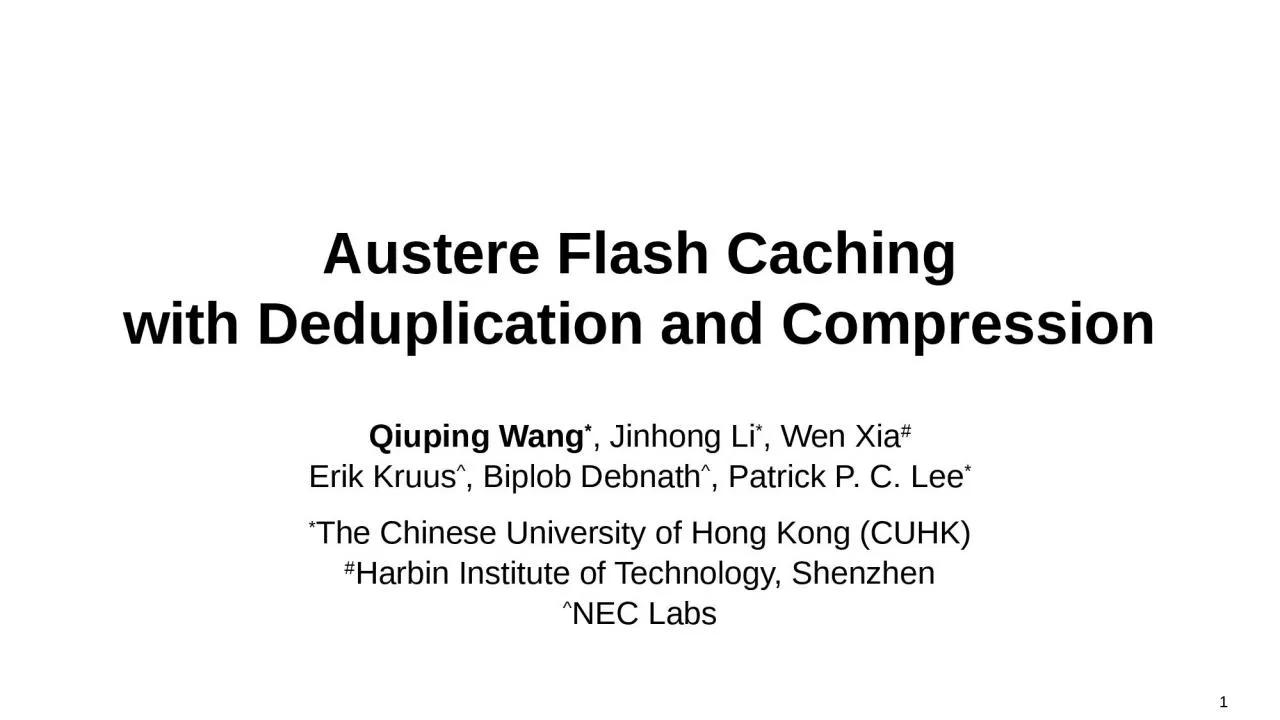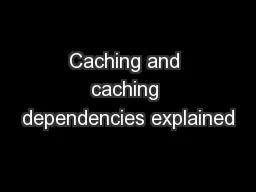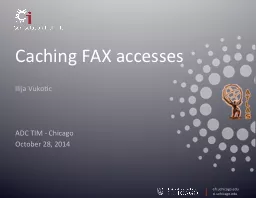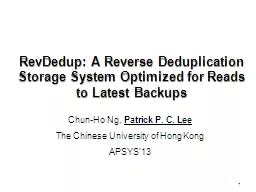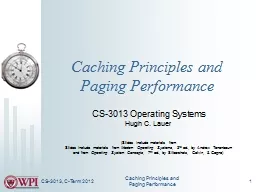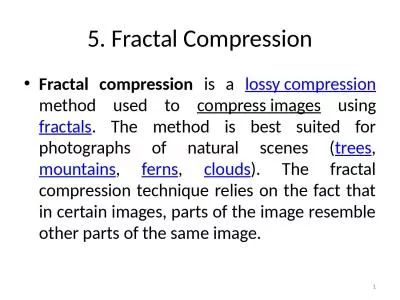PPT-Austere Flash Caching with Deduplication and Compression
Author : teresa | Published Date : 2024-02-03
Qiuping Wang Jinhong Li Wen Xia Erik Kruus Biplob Debnath Patrick P C Lee The Chinese University of Hong Kong CUHK Harbin Institute of Technology
Presentation Embed Code
Download Presentation
Download Presentation The PPT/PDF document "Austere Flash Caching with Deduplication..." is the property of its rightful owner. Permission is granted to download and print the materials on this website for personal, non-commercial use only, and to display it on your personal computer provided you do not modify the materials and that you retain all copyright notices contained in the materials. By downloading content from our website, you accept the terms of this agreement.
Austere Flash Caching with Deduplication and Compression: Transcript
Download Rules Of Document
"Austere Flash Caching with Deduplication and Compression"The content belongs to its owner. You may download and print it for personal use, without modification, and keep all copyright notices. By downloading, you agree to these terms.
Related Documents

